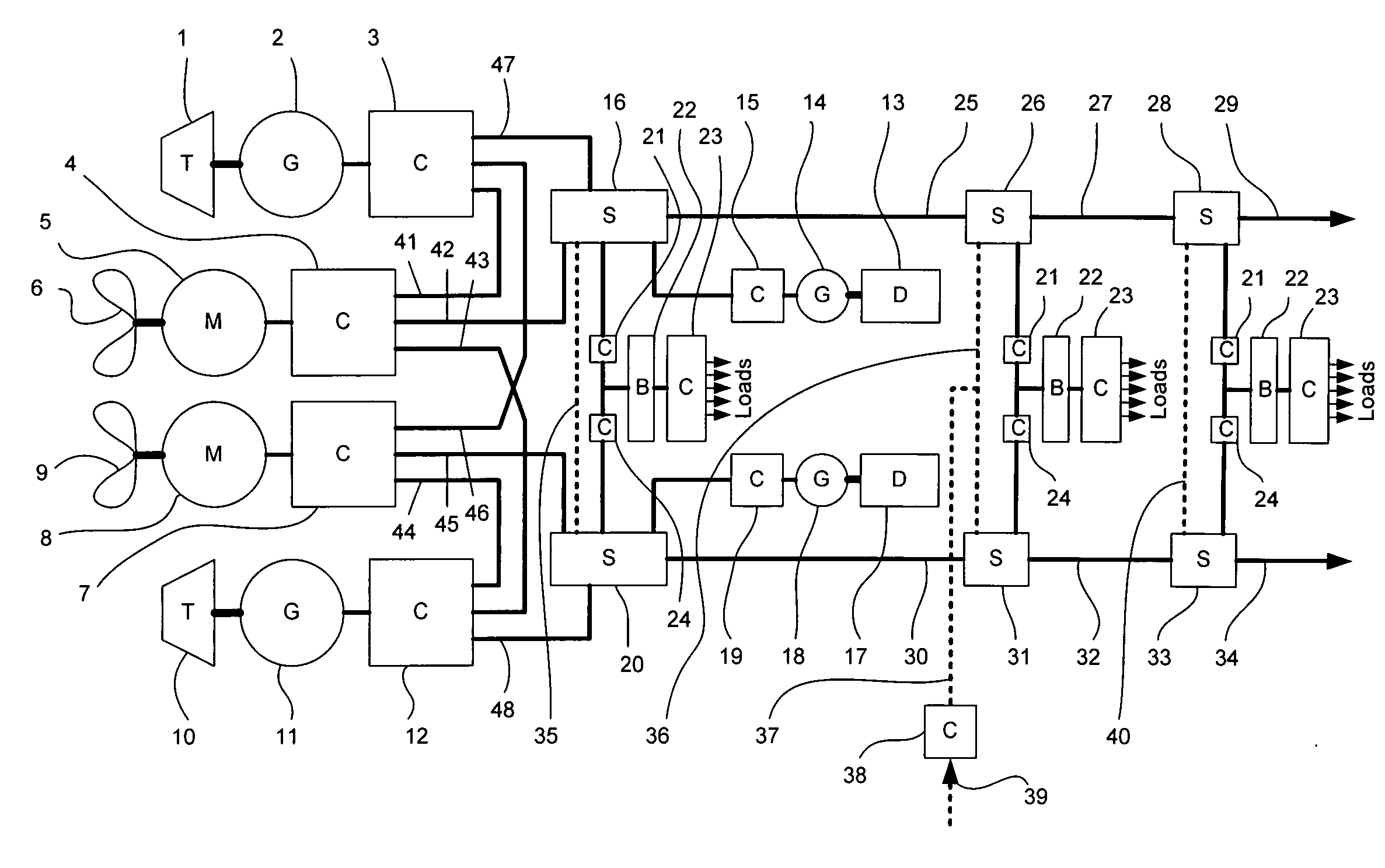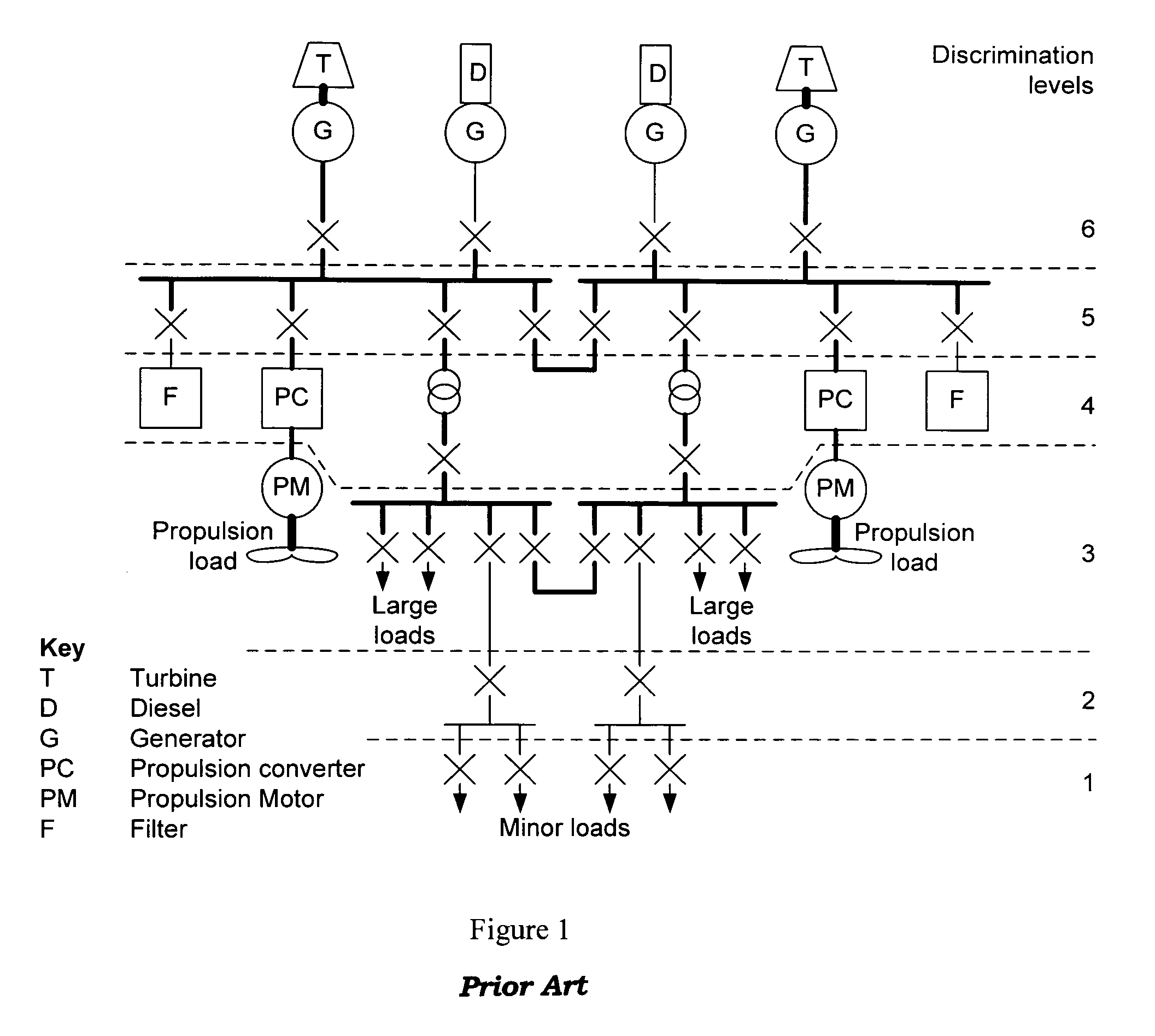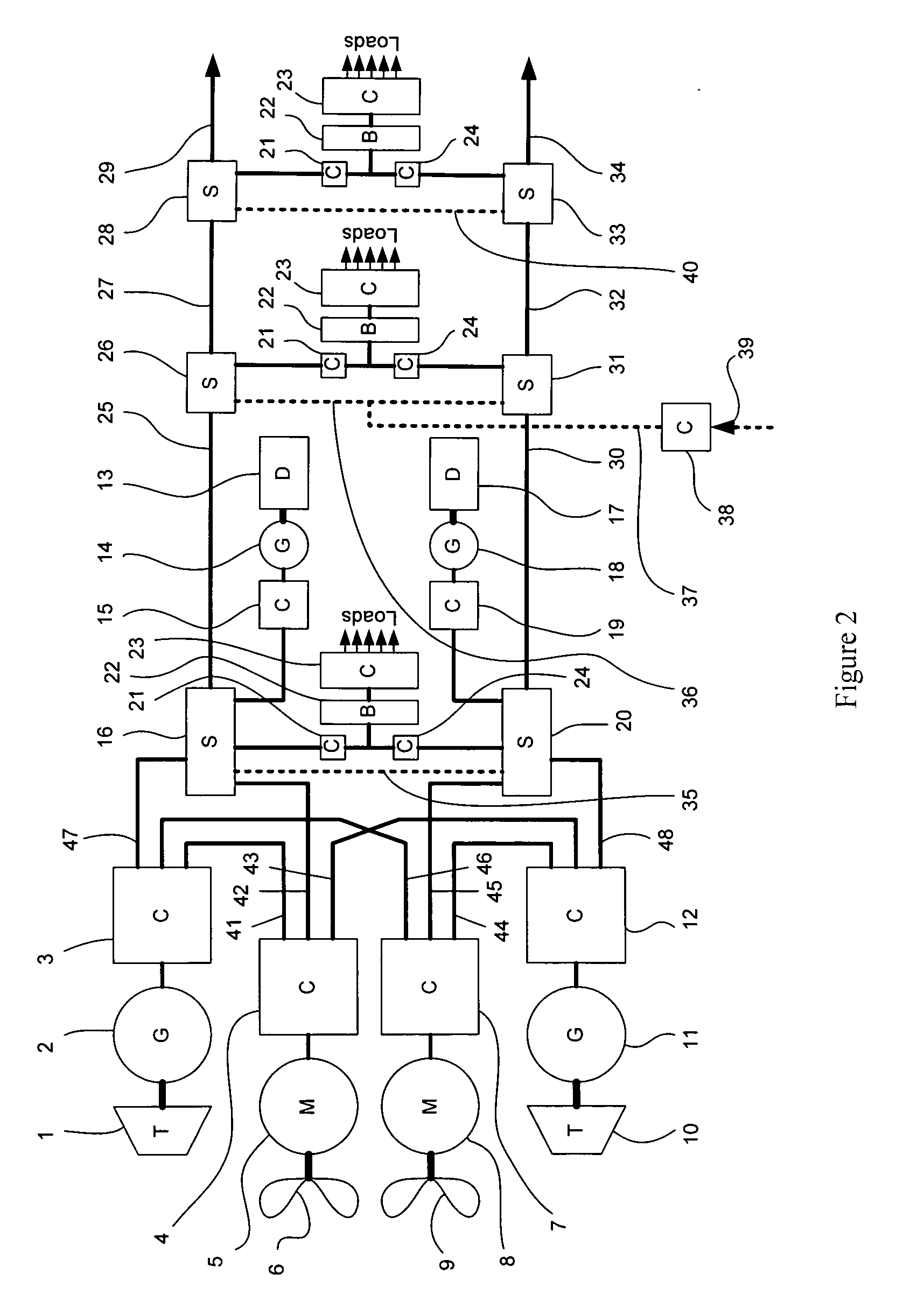Marine power distribution and propulsion systems
a technology of power distribution and propulsion system, which is applied in the direction of marine propulsion, vessel construction, propulsive elements, etc., can solve the problems of large disparities in regulated responses, large fault currents, and often becoming problemati
- Summary
- Abstract
- Description
- Claims
- Application Information
AI Technical Summary
Benefits of technology
Problems solved by technology
Method used
Image
Examples
Embodiment Construction
[0078]The basic topology of a marine power distribution and propulsion system according to the present invention will now be described with reference to FIG. 2. It should be appreciated that all of the inputs, outputs, terminals and interconnections of FIG. 2 are of double pole direct current type.
[0079]A first Propulsion Power Generation System (PPGS) includes a turbine 1 that drives a generator 2 to supply power to an output converter 3. Similarly, a second PPGS includes a turbine 10 that drives a generator 11 to supply power to an output converter 12. A first Propulsion Drive System (PDS) includes a propeller 6 that is driven by a propulsion motor 5 whose power flow is regulated by a propulsion converter 4. Similarly, a second PDS comprises a propeller 9 that is driven by a propulsion motor 8 whose power flow is regulated by a propulsion converter 7. The output converters 3 and 12 each have three sets of output terminals and the propulsion converters 4 and 7 each have three sets ...
PUM
 Login to View More
Login to View More Abstract
Description
Claims
Application Information
 Login to View More
Login to View More - R&D
- Intellectual Property
- Life Sciences
- Materials
- Tech Scout
- Unparalleled Data Quality
- Higher Quality Content
- 60% Fewer Hallucinations
Browse by: Latest US Patents, China's latest patents, Technical Efficacy Thesaurus, Application Domain, Technology Topic, Popular Technical Reports.
© 2025 PatSnap. All rights reserved.Legal|Privacy policy|Modern Slavery Act Transparency Statement|Sitemap|About US| Contact US: help@patsnap.com



